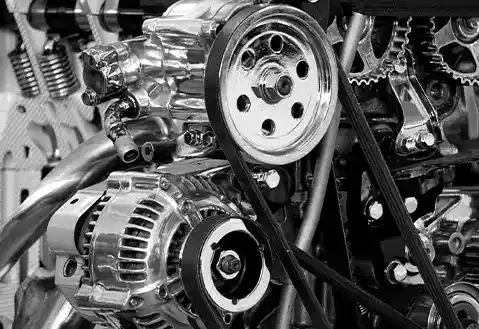- Arabic
- French
- Russian
- Spanish
- Portuguese
- Turkish
- Armenian
- English
- Albanian
- Amharic
- Azerbaijani
- Basque
- Belarusian
- Bengali
- Bosnian
- Bulgarian
- Catalan
- Cebuano
- Corsican
- Croatian
- Czech
- Danish
- Dutch
- Afrikaans
- Esperanto
- Estonian
- Finnish
- Frisian
- Galician
- Georgian
- German
- Greek
- Gujarati
- Haitian Creole
- hausa
- hawaiian
- Hebrew
- Hindi
- Miao
- Hungarian
- Icelandic
- igbo
- Indonesian
- irish
- Italian
- Japanese
- Javanese
- Kannada
- kazakh
- Khmer
- Rwandese
- Korean
- Kurdish
- Kyrgyz
- Lao
- Latin
- Latvian
- Lithuanian
- Luxembourgish
- Macedonian
- Malgashi
- Malay
- Malayalam
- Maltese
- Maori
- Marathi
- Mongolian
- Myanmar
- Nepali
- Norwegian
- Norwegian
- Occitan
- Pashto
- Persian
- Polish
- Punjabi
- Romanian
- Samoan
- Scottish Gaelic
- Serbian
- Sesotho
- Shona
- Sindhi
- Sinhala
- Slovak
- Slovenian
- Somali
- Sundanese
- Swahili
- Swedish
- Tagalog
- Tajik
- Tamil
- Tatar
- Telugu
- Thai
- Turkmen
- Ukrainian
- Urdu
- Uighur
- Uzbek
- Vietnamese
- Welsh
- Bantu
- Yiddish
- Yoruba
- Zulu
నవం . 15, 2024 06:33 Back to list
v belt
Understanding V-Belts An Essential Component in Mechanical Systems
V-belts are one of the most widely used components in mechanical systems, playing a crucial role in the transfer of power between various machines and drive systems. Their unique design and efficiency make them an ideal choice for a variety of applications, from automotive engines to industrial machinery. In this article, we will explore the fundamentals of V-belts, their applications, advantages, disadvantages, and maintenance tips to ensure optimal performance.
What is a V-Belt?
A V-belt is a looped strip of rubber, composite, or other flexible materials with a trapezoidal cross-section. The unique shape allows the belt to fit snugly into the grooves of pulleys, providing a secure grip that reduces slippage and enhances power transmission efficiency. V-belts are typically categorized into several types, including classical V-belts, narrow V-belts, and cogged V-belts, each designed for specific performance requirements.
Applications of V-Belts
V-belts are utilized in a wide range of applications across various industries. Common uses include
1. Automotive V-belts are critical components in vehicles, driving systems such as the alternator, air conditioning compressor, and water pump. The reliability of these belts ensures that essential functions operate smoothly.
2. Industrial Machinery In manufacturing and production environments, V-belts are used to drive machines such as compressors, conveyors, and fans. Their ability to handle variable loads makes them valuable in dynamic settings.
3. Agricultural Equipment Tractors and other agricultural machinery often rely on V-belts for power transfer, aiding in the functioning of implements and attachments.
4. HVAC Systems Heating, ventilation, and air conditioning systems frequently use V-belts to drive blowers and pumps, ensuring efficient airflow and temperature control.
Advantages of V-Belts
The popularity of V-belts can be attributed to several advantages
- High Efficiency V-belts offer excellent power transmission capabilities, enabling machines to operate at optimal performance levels while minimizing energy loss.
- Flexibility The flexibility of V-belts allows them to handle misalignment and varying loads, making them suitable for machines with complex configurations.
- Space-saving Design The compact design of V-belts allows for space-efficient installation, making them ideal for applications where space is at a premium.
v belt

- Cost-effectiveness V-belts are generally more affordable compared to other power transmission methods, such as chain drives or gear systems, without compromising performance.
Disadvantages of V-Belts
Despite their advantages, V-belts are not without drawbacks
- Wear and Tear V-belts are subject to wear from friction and environmental factors, necessitating regular inspection and replacement to prevent failure.
- Temperature Sensitivity Exposure to extreme temperatures can affect the material properties of V-belts, leading to potential failure if not monitored.
- Limited Load Capacity For high-torque applications, V-belts may not be as effective as alternative drive systems, which can handle greater loads without slipping.
Maintenance Tips for V-Belts
To ensure the longevity and efficiency of V-belts, proper maintenance is essential. Here are some tips
1. Regular Inspection Routinely check belts for signs of wear, cracking, or fraying. Early detection can prevent unexpected breakdowns.
2. Proper Tensioning Ensure that the belt is properly tensioned. Under-tensioning can lead to slippage, while over-tensioning can cause excessive wear on both the belt and the pulleys.
3. Alignment Check Misalignment can lead to uneven wear and reduced efficiency. Regularly verify that pulleys are aligned and correct any discrepancies.
4. Clean Environment Keep the area around the belts free from debris and contaminants that can cause wear or slipping.
5. Replace as Needed If signs of significant wear are observed, prompt replacement of the belt is crucial to maintaining system reliability.
Conclusion
V-belts are an integral part of many mechanical systems, providing reliable power transmission across various applications. Understanding their functionality, advantages, and maintenance is vital for anyone working with machinery that utilizes these components. With proper care, V-belts can contribute to the efficient operation of equipment, minimizing downtime and maximizing productivity. Whether in an automotive, industrial, or agricultural setting, the significance of V-belts cannot be overstated, making them a key topic in mechanical engineering and maintenance practices.
-
Korean Auto Parts Timing Belt 24312-37500 For Hyundai/Kia
NewsMar.07,2025
-
7PK2300 90916-T2024 RIBBED BELT POLY V BELT PK BELT
NewsMar.07,2025
-
Chinese Auto Belt Factory 310-2M-22 For BMW/Mercedes-Benz
NewsMar.07,2025
-
Chinese Auto Belt Factory 310-2M-22 For BMW/Mercedes-Benz
NewsMar.07,2025
-
90916-02660 PK Belt 6PK1680 For Toyota
NewsMar.07,2025
-
drive belt serpentine belt
NewsMar.07,2025

